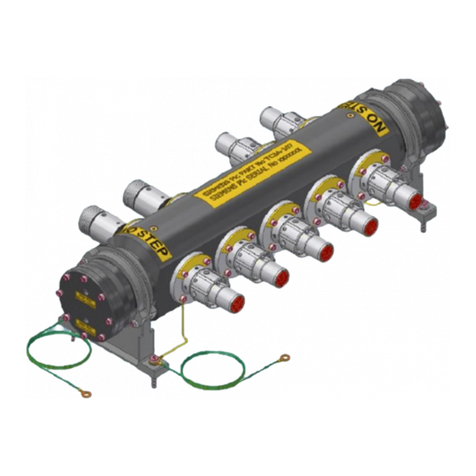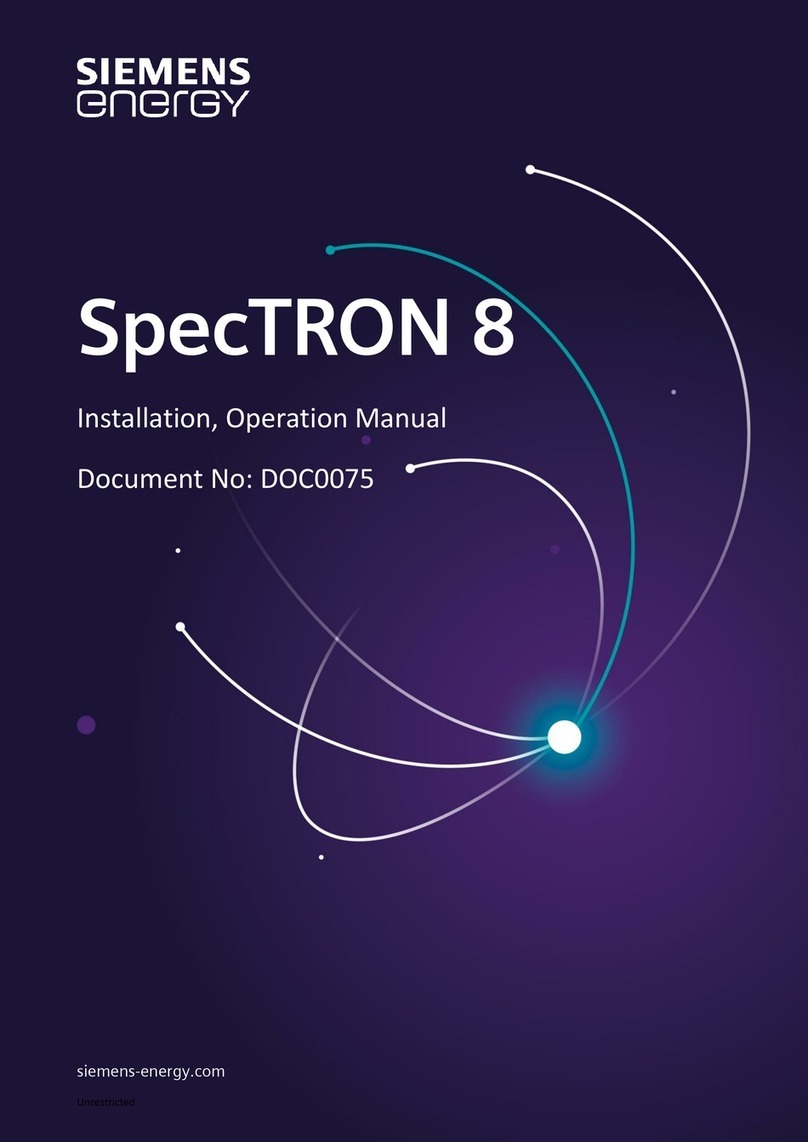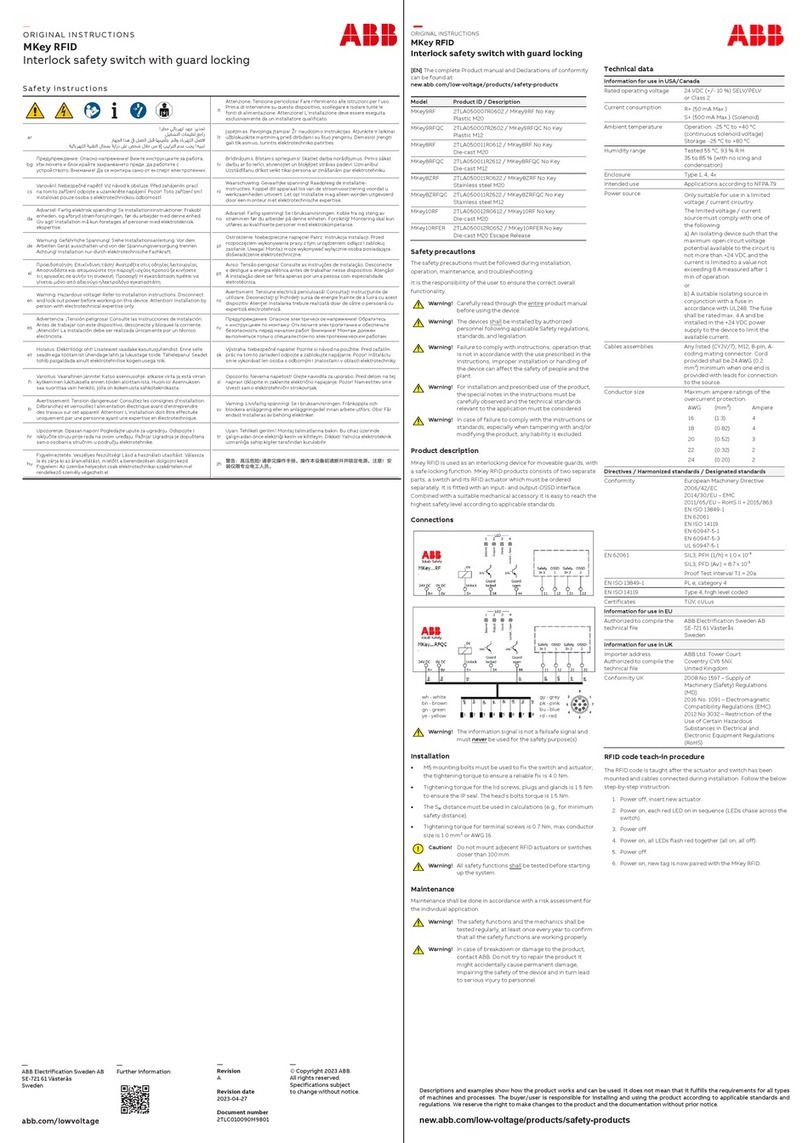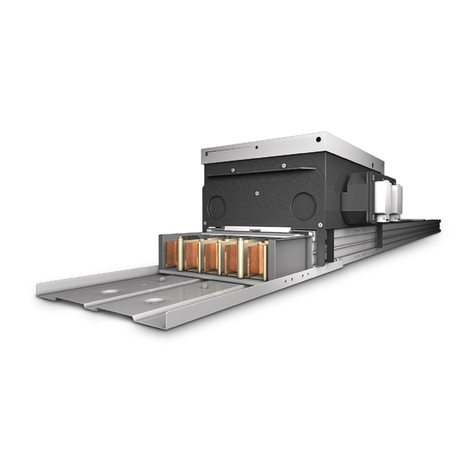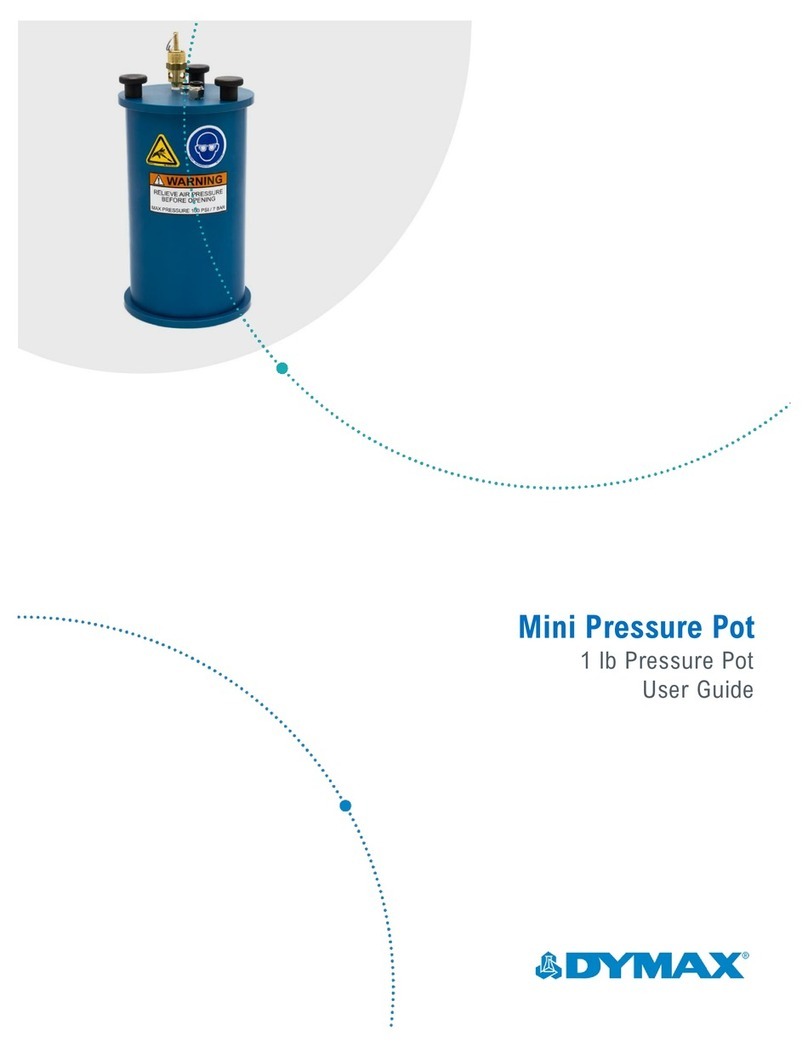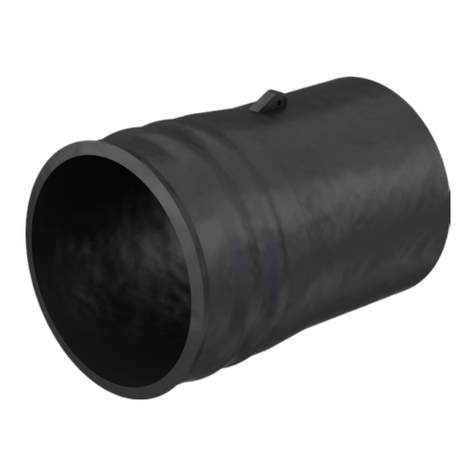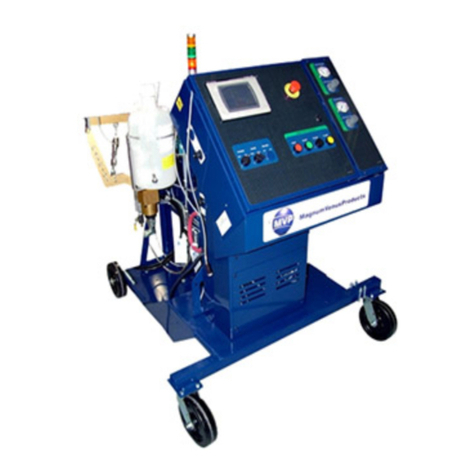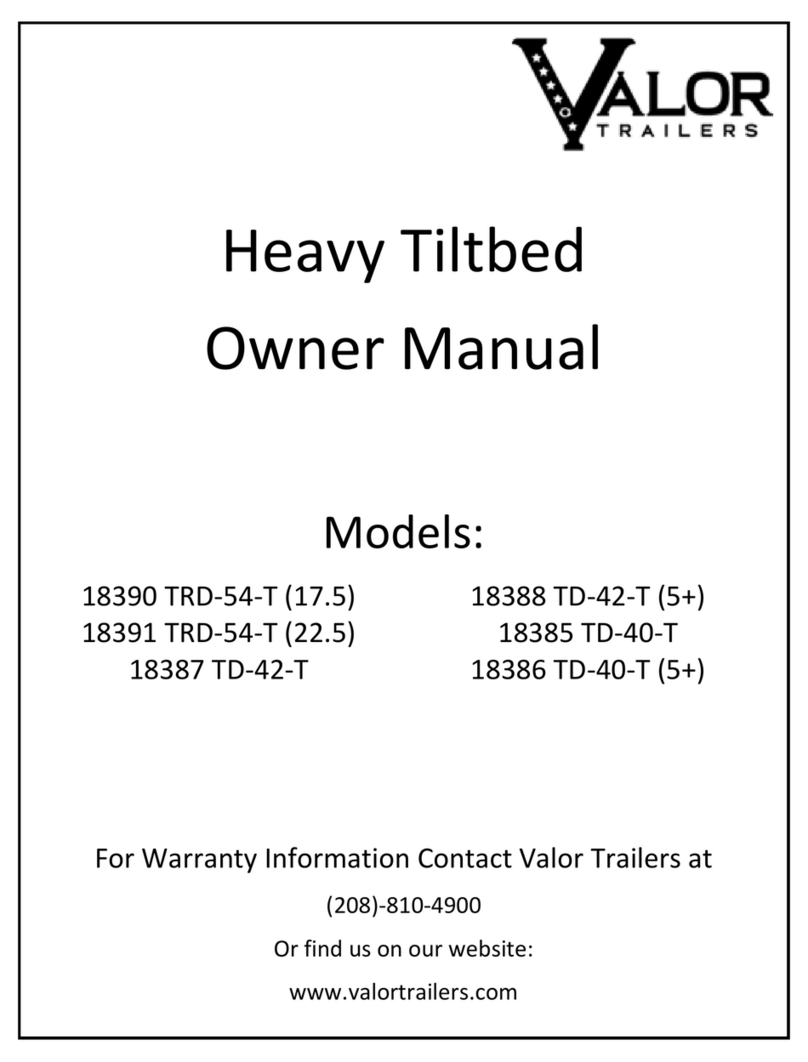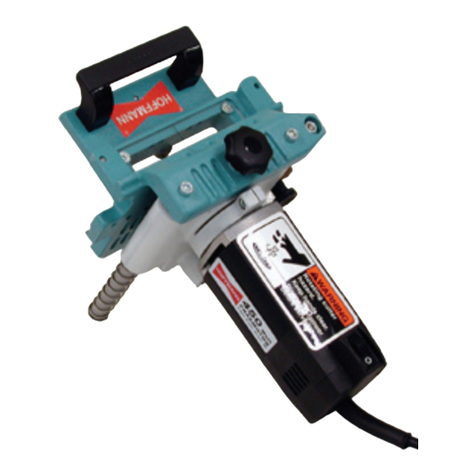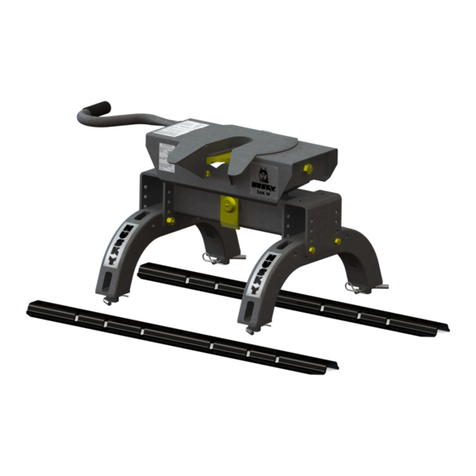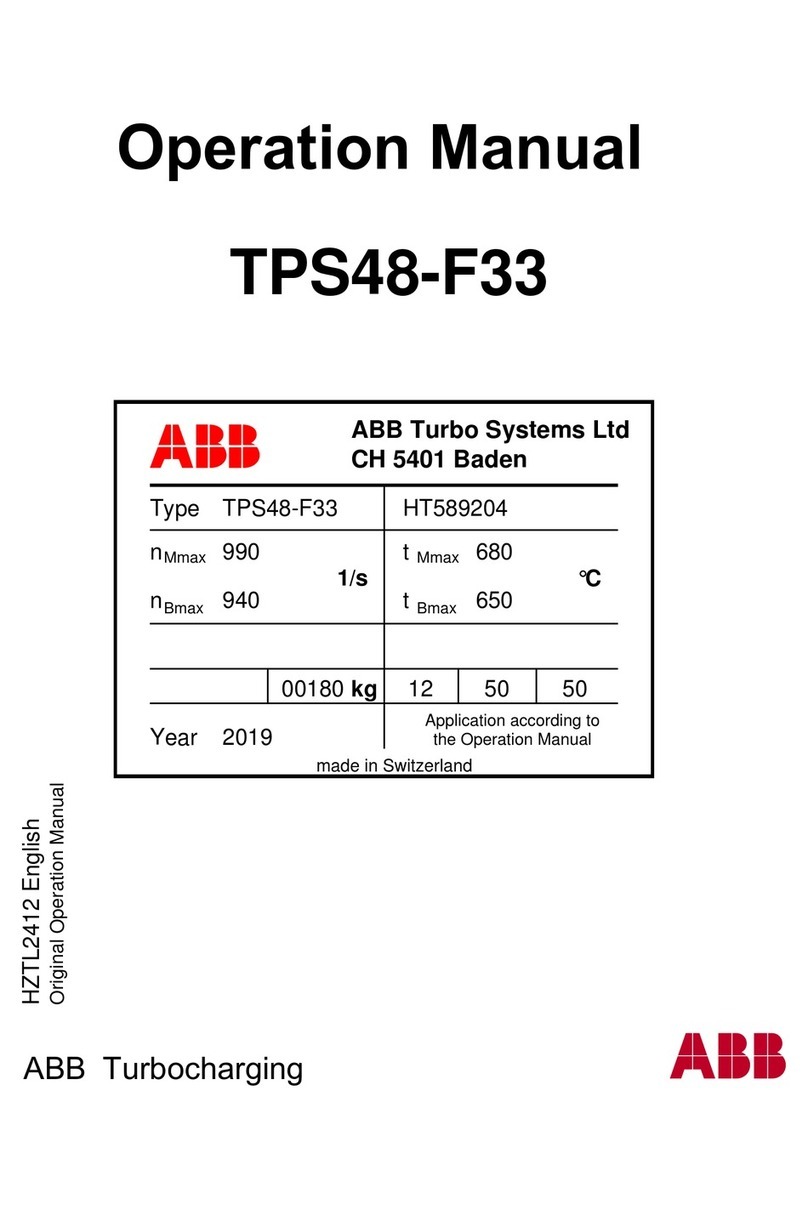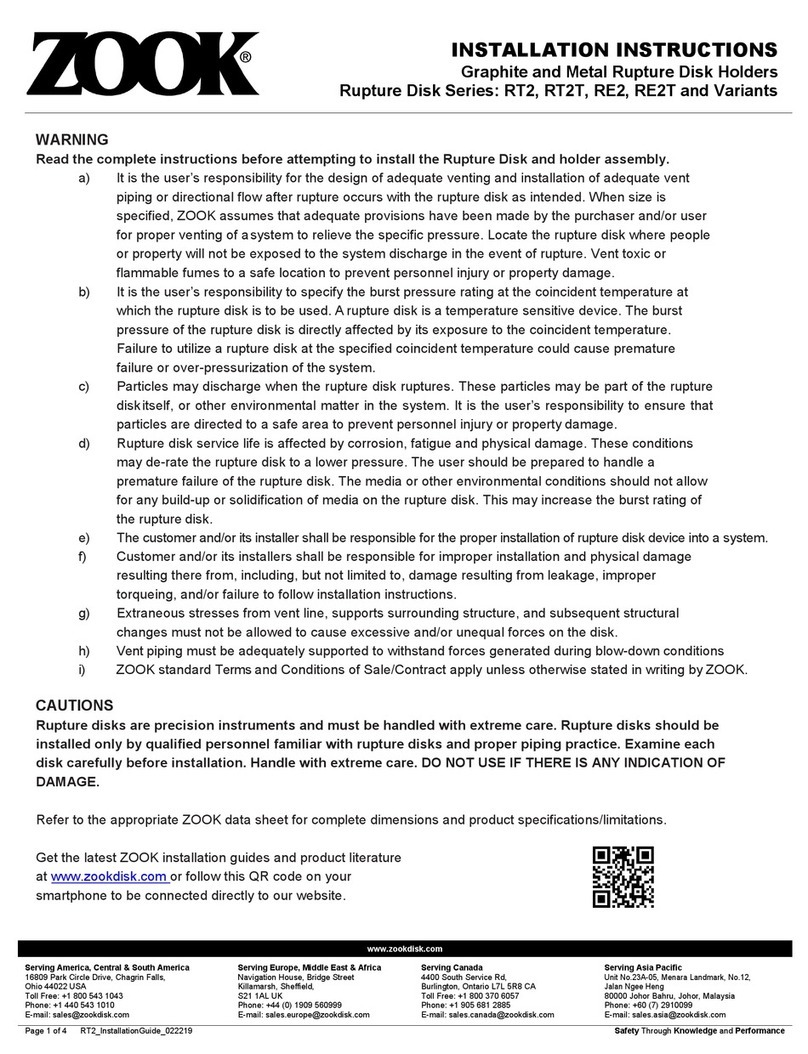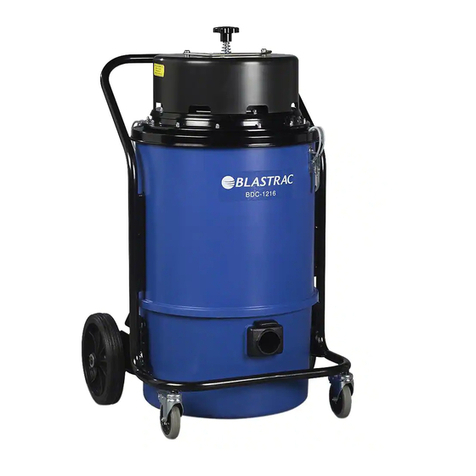Siemens Energy DigiTRON Retrievable Electrical Distribution... User manual

Document No:
Template
Issue Date:
dd/mm/yyyy
Revision:
1
Page:
1 of 35
Unrestricted
Siemens Energy is a registered trademark licensed by Siemens AG
DigiTRON Retrievable Electrical Distribution
Unit (REDU), 1st generation - Installation,
Operations and Maintenance Manual
Protection, Storage, Shipment, Unpacking, Deployment
& Maintenance Instructions
Document No: IOM-006

Document No:
IOM-006
Issue Date:
16/11/2020
Revision:
3
Page:
2 of 35
Unrestricted

Document No:
IOM-006
Issue Date:
16/11/2020
Revision:
3
Page:
3 of 35
Unrestricted
Foreword
Thank you for purchasing a Siemens Energy Subsea product. The information contained in this
document is an overview including the protection, storage, shipment, unpacking, deployment and
maintenance for 1st generation ‘TC3A’ DigiTRON Retrievable Electrical Distribution Unit (REDU) and
mounting plate.
IMPORTANT
READ CAREFULLY BEFORE USE
KEEP FOR FUTURE REFERENCE
Revision Summary
This page records the revision status of the entire document and its authorisation for issue.
Copyright © 2020 Siemens Energy Subsea Connectors, (a division of Siemens Energy plc),
Subsea Excellence Centre, Ulverston, Cumbria, LA12 9EE, England.
Rev
Compiled
by
Date
Approved
by
Issue Date
Page(s) Affected/Remarks
3
R Wyatt
16/11/2020
Eric Chaize
16/11/2020
Updated onto new IOM template with product
safety advice clearly identified. Harmonised with
IOM-005.
2
A.Ellis
28/10/2020
J. Pridmore
28/10/2020
Fig 1 added showing REDU lifting points. Section
7 updated with max. deployment/retrieval speed
and reference to IOM-002 added
1
T. Archer
JP Smith
11/02/2020
First issue
Contents

Document No:
IOM-006
Issue Date:
16/11/2020
Revision:
3
Page:
4 of 35
Unrestricted
1PRODUCTS COVERED BY THIS MANUAL....................................................6
2BASIC INFORMATION & QUICK REFERENCE..............................................7
2.1 Product overview.....................................................................................7
2.2 Product specification and certification .................................................7
2.3 Contact details and feedback.................................................................8
2.4 Product advice label................................................................................8
2.5 Product marking ......................................................................................9
2.6 CE label/marking......................................................................................9
2.7 Product example....................................................................................10
3PRODUCT SAFETY........................................................................................11
3.1 Action-related warnings........................................................................11
3.2 Intended use...........................................................................................11
3.3 General safety information...................................................................12
3.4 Related documents................................................................................15
3.5 Control of substances hazardous to health (COSHH) .......................15
4ABBREVIATIONS...........................................................................................16
5SPECIFICATIONS...........................................................................................17
5.1 ROV operated Connector Specification ..............................................17
6PREPARING PRODUCT FOR USE OR STORAGE......................................18
6.1 Product protection and packaging ......................................................18
6.2 Lifting......................................................................................................18
6.3 Unpacking...............................................................................................19
6.4 Storage, protection, and end of life .....................................................19
7INSTALLATION AND ASSEMBLY ................................................................21
7.1 Cathodic protection...............................................................................21
7.2 REDU.......................................................................................................21
7.3 Base plate installation...........................................................................23
7.4 Mate/de-mate of REDU box to Base plate ...........................................23
8USER INFORMATION DURING NORMAL OPERATION AND FAULT
CONDITIONS..................................................................................................28
8.1 Visible/audible signals ..........................................................................28
8.2 Normal and faulty/dangerous operation..............................................28
8.3 Troubleshooting.....................................................................................28
9PRODUCT OPERATION AND MAINTENANCE............................................29
9.1 Safety precautions.................................................................................29
9.2 Product maintenance and servicing....................................................29

Document No:
IOM-006
Issue Date:
16/11/2020
Revision:
3
Page:
5 of 35
Unrestricted
9.3 Subsea protection of receptacle contact pins....................................29
9.4 Product protection; caps and dummy connectors.............................29
9.5 Live Mate / De-mate ...............................................................................31
9.6 Removal of marine growth and calcareous deposits.........................31
9.7 Testing of product .................................................................................32
9.8 Checks before mating the connectors ................................................32
9.9 ROV connectors mating and de-mating..............................................32
10 CUSTOMER COMMENTS/FEEDBACK.........................................................35
Tables
Table 1 List of other Installation, Operation and Maintenance manuals related to
DigiTRON product range.................................................................................6
Table 2 DigiTRON product specification and certification .......................................7
Table 3 DigiTRON product contact details.................................................................8
Table 4 DigiTRON ROV connector specification .....................................................17
Table 5 Maximum misalignment values REDU box to Base plate..........................24
Table 6 Troubleshooting product contact details....................................................28
Illustrations
Figure 1 Product advice label........................................................................................8
Figure 2 Product marking on DigiTRON product ........................................................9
Figure 3 Typical REDU Box Assembly and Base Plate Assembly...........................10
Figure 4 REDU lifting points........................................................................................18
Figure 5 Dry (topside) test connectors, ROV, Diver and Stab-plate type................22
Figure 7 Markings on guideposts ...............................................................................24
Figure 8 a) Allowable Horizontal Misalignment, b) End View Allowable
Misalignment..................................................................................................25
Figure 9 Secondary Pin Capture Misalignment.........................................................26
Figure 10 Allowable Cone to Pin Concentric Misalignment.......................................27
Figure 11 23mm (0.905”) diameter through hole .........................................................27
Figure 12 ROV-type Transport Caps (left) and Topside Protective Caps .................30
Figure 13 ROV-type Subsea Caps.................................................................................30
Figure 14 ROV-type Subsea Environmental Cap and Dummy Connectors, flying
and flanged types.................................................................................................................30
Figure 15 Alignment marks and lip seal mating indicator..........................................33
Figure 16 ROV de-mate tool, part number BQ-30090-00.............................................34

Document No:
IOM-006
Issue Date:
16/11/2020
Revision:
3
Page:
6 of 35
Unrestricted
1 PRODUCTS COVERED BY THIS MANUAL
This document is an overview of the protection, storage, shipment, unpacking, deployment, and
maintenance instructions for the 1st generation ‘TC3A’-type Retrievable Electrical Distribution Unit
(REDU).
Products covered by this IOM can be readily identified visually, all looking very similar to the
examples given section 2.7.
Part numbers for these REDU products all begin with:
TC3A-xxx -where xxx are part numbers for specific variants of REDU, differences mainly being
quantity of connectors, and connector types.
Installation, Operation and Maintenance manuals for other DigiTRON products not covered by this
document can be found on Siemens Subsea website https://www.siemens-energy.com /search
Subsea, as follows:
DOC. No.
PRODUCT
IOM-001
DigiTRON electrical flying leads, Jumper and Sensor Harnesses
IOM-002
DigiTRON single connectors
IOM-003
Obsoleted, replaced by IOM-002.
IOM-004
Not used
IOM-005
Retrievable Electrical Distribution unit (REDU), 2nd generation
IOM-007
Disconnectable junction boxes type TC3A-107 and similar Electrical
distribution Units (EDUs).
IOM-008
DigiTRONffiber optic flying leads and harness assemblies
IOM-009
DigiTRONffiber optic single connectors
00003075
Subsea PT/TT sensors
00007464
Differential Pressure sensors SDP-6 / SDP-8
Table 1 List of other Installation, Operation and Maintenance manuals related to DigiTRON
product range

Document No:
IOM-006
Issue Date:
16/11/2020
Revision:
3
Page:
7 of 35
Unrestricted
2 BASIC INFORMATION & QUICK REFERENCE
2.1 Product overview
DigiTRON REDUs intended use is communication and distribution of low voltage between pieces of
electrical equipment that are submerged in water, e.g. subsea. The REDUs utilizes DigiTRON
connectors. The DigiTRON range of connectors have been developed for long term reliable
communications and low voltage power control system applications associated with offshore
installations. The underwater mating capacity of these connectors is achieved using pressure
compensated electrical inserts employing the CE principle.
An example is shown in section 2.7 to help identify the REDU product.
2.2 Product specification and certification
Basic specifications relating to all products covered by this manual are below in Table 2. Additional
specifications can be found in section 5.
Design Life:
30 years in subsea environment
Rated voltage
1,000Vac pin-ground, 2,000Vac pin-pin
Rated current
In water: 4-way 35-40A 7-way 22-32A 12-way 20-28A
In air: 4-way 18A 7-way 14A 12-way 11A
Over-current
100A for 5 seconds, no more than 2 per hour
Rated number of
operations
1000 (750dry/250wet) mate / de-mate cycles (Power off)
Water depth
3,000 m (9,843 ft)
Deployment and
retrieval rate
Max. 350m/min (1,150ft/min)
Storage temperature
-40°C +70°C (-40°F +158°F) (upper limit is surface temperature of the
product and includes solar gain from bright sunlight)
Operational temp
Subsea: -5°C +60°C (+23°F +140°F)
In air: -20°C +50°C (-4°F +122°F)
Weight
Up to 170kg (374 lb), depending on product configuration
(see shipping note, or specific product datasheet)
Product Certification:
Standard
Description
EU Directive
2001/95/EC
General Product Safety
EU Directive
2014/35/EU
Low Voltage Directive
IEC 61984
Connectors - Safety requirements and tests
API-17F
Standard for Subsea Production Control Systems
Note: Self-certified via in-house testing.
Table 2 DigiTRON product specification and certification

Document No:
IOM-006
Issue Date:
16/11/2020
Revision:
3
Page:
8 of 35
Unrestricted
2.3 Contact details and feedback
For additional information or questions regarding the products visit the Siemens website
www.siemens-energy.com /search Subsea, or contact the following:
Department
E-mail address
Product Safety Officer
subsea.connectors.productsafety.gb@siemens-
energy.com
Technical Support
connectortechnicalsupport.gb@siemens-energy.com
Service (Site Team)
susultlcmsupport.gb@siemens-energy.com
Sales
connectorsales.gb@siemens-energy.com
Table 3 DigiTRON product contact details
Any information, records, or Health and Safety feedback that needs to be detailed can be recorded
in section 10 of this document and sent to the relevant department in Table 3.
2.4 Product advice label
The following product advice label is supplied with all Siemens Energy subsea products.
Figure 1 Product advice label

Document No:
IOM-006
Issue Date:
16/11/2020
Revision:
3
Page:
9 of 35
Unrestricted
2.5 Product marking
Siemens Energy REDU products are marked with the Siemens Energy part number and unique
serial number. Also, the voltage, temperature and water depth ratings are indicated.
Typically these are etched on a yellow-coloured label permanently attached to the product (refer to
Figure 3)
Also, similar information relating to each connector is etched onto the connector metal body, refer
to Figure 2.
Figure 2 Product marking on DigiTRON product
2.6 CE label/marking
The CE label/marking where applicable shows that the products comply with the requirements of the
applicable directives as follows:
•2014/35/EU –Low Voltage Directive
Declaration of Conformity will be supplied with the goods.

Document No:
IOM-006
Issue Date:
16/11/2020
Revision:
3
Page:
10 of 35
Unrestricted
2.7 Product example
Figure 3 Typical REDU Box Assembly and Base Plate Assembly
Product identification label

Document No:
IOM-006
Issue Date:
16/11/2020
Revision:
3
Page:
11 of 35
Unrestricted
3 PRODUCT SAFETY
Siemens Energy Subsea recommends that the termination of all equipment shall only be undertaken
by trained, suitably qualified and experienced personnel (SQEP) i.e. competent person.
Following installation, commissioning or deployment of product, if you have any feedback please
complete and return the Customer Comments/Feedback form (Section 10). Please e-mail completed
form to the Product Safety Officer at subsea.connectors.productsafety.gb@siemens-energy.com
3.1 Action-related warnings
Classification of action-related warnings
The action related warnings are classified in accordance with the severity of the possible danger
using the following warning signs and signal words:
Warning symbols and signal words
Danger!
Imminent danger to life or risk of severe personal injury
Danger!
Risk of death from electric shock
Warning.
Risk of minor personal injury
Caution.
Risk of material or environmental damage
3.2 Intended use
The product is intended as a Low Voltage electrical connection and distribution system for subsea
use. There is a risk of injury or death to the user or others, or of damage to the product and other
property in the event of improper use or use for which it is not intended.
Intended use includes the following:
- observance of the installation and operating instructions included for the product and any other
system components.
- compliance with all inspection and maintenance conditions listed in the instructions.
- use of all recommended tooling appropriate for specific tasks.
- all activities to be undertaken by a competent person (see 3.3.1 for definition).
Any other use that is not specified in this document or covered in installation and operating
instructions, or beyond that specified in this document shall be considered improper use.
Caution. Risk of material or environmental damage, improper use of any kind is prohibited.

Document No:
IOM-006
Issue Date:
16/11/2020
Revision:
3
Page:
12 of 35
Unrestricted
3.3 General safety information
Installation by competent persons only
The installation, inspection, maintenance and repair of the product shall be undertaken by trained,
suitably qualified and experienced personnel (SQEP) i.e. competent person, to carry out a specified
activity. Installation, inspection, maintenance and repair of products by untrained and deemed non-
competent persons could invalidate the product warranty. For further information contact Siemens
Personal protective equipment (PPE)
Personal Protective Equipment (PPE) is legally defined as ‘all equipment (including clothing affording
protection against the weather) which is intended to be worn or held by a person at work and which
protects the user against one or more risks to their health or safety’.
In the hierarchy of risk control, PPE is considered to rank lowest and represent the option of last
resort. PPE is only appropriate where the hazard in question cannot be totally removed or controlled
in such a way that harm is unlikely (for example by isolating the hazard or reducing the risk at source
to an acceptable level).
All company personnel and operators should wear appropriate Personal Protective Equipment (PPE)
defined as a result of relevant risk assessments in accordance with the Personal Protective
Equipment (PPE) Regulations.
Wear appropriate PPE according to the product safety advice given in this document
Danger caused by improper operation and foreseeable misuse
Improper operation and foreseeable misuse may present a danger to you and others and cause
material damage. Carefully read the enclosed instructions and all other applicable documents,
particularly the “Safety” section and the warnings.
Danger! Risk of death from electric shock if shuttle pins (on the plug connector) are
depressed e.g. with a screwdriver when plug is live (foreseeable misuse).
- Testing activities must only be carried out by a competent person.
- Correct test connector shall always be fitted for electrical testing.
Danger! Risk of imminent danger to life, risk of severe personal injury caused by a shuttle
pin projectile due to damage caused to shuttle pins e.g. with a screwdriver (foreseeable
misuse).
- Maintenance and testing activities must only be carried out by a competent person.
- Correct tools must always be used.

Document No:
IOM-006
Issue Date:
16/11/2020
Revision:
3
Page:
13 of 35
Unrestricted
Risk of death due to electrocution
Danger! Risk of death from electric shock due to exposed live pins, e.g. factory or top-side
system test and unmated receptacle is energised.
- Never energise a receptacle connector when not mated to a plug.
- Ensure all test procedures are followed.
- Communication channels and protocols are observed.
Danger! Risk of death from electric shock due to unscreened cables.
- Do not touch electrical wires while energised. Ensure all test procedures are followed.
Danger! Risk of death from electric shock from any exposed conductors due to stored
electrical energy, e.g. capacitance of cable or elsewhere in the system.
- Ground all electrical conductors after testing and do not touch conductors until
electrical system is fully discharged. Ensure all procedures are followed.
Danger! Risk of death from electric shock, if product is terminated incorrectly e.g. loose
conductor touching metal box or terminated to metal box in error.
- Installation/termination activities must be carried out by a competent person.
- Always electrically ground metal bodies prior to electrically energising a connector.
- Never hold the product when live.
Danger! Risk of death from electric shock or severe personal injury through burning from
de-mating live conductors by hand.
- Do not de-mate the product while live
- Never hold the product while live
- Ensure all procedures are followed for mating/de-mating connectors.
Risk of injury and material damage due to testing, maintenance and
repairs carried out incorrectly or not at all
The REDUs are non-serviceable by the user. In case of suspected faults with the product (refer to
section 8.2), do not use the product and contact Siemens Energy Technical Support or Siemens
Energy Product Safety for advice. Never attempt to carry out maintenance work or repairs on the
product yourself.
Danger! Risk of death from electric shock if user dismantles / incorrectly re-assembles /
incorrectly terminates product (foreseeable misuse).
- There are no parts of the product that require maintenance or inspection. The product
should not be disassembled.
- Termination of electrical wires to the product must only be carried out by a competent
person.
Danger! Risk of death from electric shock from improper use of test connector
(foreseeable misuse). In particular, removal of the rubber termination sleeves placed over
the joint between the cable and the test connector is prohibited, as this will expose live
parts to the user.
Never disassemble a test connector

Document No:
IOM-006
Issue Date:
16/11/2020
Revision:
3
Page:
14 of 35
Unrestricted
Warning. Risk of minor personal injury from high temperature of the product due to ohmic
heating in short-circuit condition or high over-currents.
- In the event of a high over-current, allow the connectors to cool before touching.
- Ensure all testing of products both factory and deployed in-field have been completed
by competent persons.
Danger! Risk of severe personal eye injury due to pressurised oil squirting out of damaged
hose or removal of fill/vent screw.
- Ensure all testing of products both factory and deployed in-field have been completed
by competent persons.
Warning. Risk of eye/bodily injury caused by released pressure during product
disassembly, in the event of retrieval from subsea with a fault that causes depth pressure
to be trapped inside the product.
- Ensure all product disassembly activities are completed by competent persons in
accordance with relevant procedures and using relevant personal protective
equipment (PPE).
Warning. Risk of bodily injury caused by pressure retaining parts becoming projectile due
to user over-pressurising the system, e.g. during Site Installation Test (SIT).
- Ensure all product SIT activities are completed by competent persons in accordance
with relevant procedures.
Risk of injury and material damage due to manual handling
Manual handling, lifting and carrying are known to be one of the largest contributors to occupational
ill-health. Ensure mechanical handling aids are used wherever possible to avoid manual handling.
Where manual handling is considered appropriate for the task, safe lifting guidelines must be
followed, e.g. adopt correct posture, consider team lifting, employ safe lifting technique, etc. Only
competent persons are permitted to perform tasks without supervision, if in doubt ask.
Warning. Risk of musculoskeletal injury from mating or de-mating connectors by hand.
- Referring to the mate / de-mate forces specified herein, ensure suitable manual
handling precautions are taken.
Ensure all product testing activities are completed by competent persons in accordance
with relevant procedures.
- Warning. Risk of musculoskeletal injury from manual handling of heavy products.
Refer to section 2.2 (Table 2) or shipping information or product datasheet for weights
of the product.
- Ensure mechanical handling aids are used wherever possible to avoid manual
handling.
- Where manual handling is considered appropriate for the task, safe lifting guidelines
must be followed, e.g. adopt correct posture, consider team lifting, employ safe lifting
technique, etc.
Only competent persons are permitted to perform tasks without supervision, if in doubt
ask.

Document No:
IOM-006
Issue Date:
16/11/2020
Revision:
3
Page:
15 of 35
Unrestricted
Warning. Risk of bodily injury from heavy product falling during lift with machinery.
- Ensure machinery/slings used have been tested and are within their expiry date.
- Safe lifting guidelines must be followed, e.g. lifting plan, banksman, etc.
- Correct lifting points must be identified and used.
Only competent persons are permitted to perform tasks without supervision, if in doubt
ask.
Warning. Risk of minor personal injury to persons with sensitivities to silicone or mineral
based oils.
There is a small risk that oil could leak from the product if faulty. Wear appropriate hand
protection when handling products or mineral or synthetic based oils in case oils leak
from the connector due to a fault.
Warning. Risk of minor personal injury and material damage due to slips, trips and falls.
Good housekeeping avoids slips, trips and falls, keep all work areas clean and tidy.
3.4 Related documents
Installers shall carry out a full site risk assessment and put into place all necessary steps and
procedures to comply with applicable area, regional, national or international health and safety
legislation, e.g. The Health and Safety at Work Act (HASAWA) in the United Kingdom (UK) and
ensure safety of themselves and others regarding manual handling and working at height
requirements.
During the product installation (and any subsequent work) it will be necessary to employ caution. All
installers and operatives involved from unloading the product until it is deployed in its final installed
location must exercise a full duty of care for themselves and others regarding safety. When lifting
and handling this product, operatives should employ assistance if required. In certain situations, it
may be necessary to use mechanical handling aids. Take care to avoid trip hazards, slippery or wet
surfaces.
Employers and installers should refer to the Health and Safety Executive (HSE) web site in the UK
for full advice and manual handling assessment charts (MAC) tool.
In addition, where no specific instructions are given then reference shall be made, but not restricted
to, where applicable, British Standards and codes of practice such as the following:
- The Health and Safety at Work Act.
- COSHH Control of substances hazardous to health.
- BS 7671 Requirements for electrical installations. IEE Wiring Regulations.
- The Electricity at Work Regulations.
It is the operator’s and installers responsibility to comply with current Company, area, regional,
national or international health and safety legislation.
3.5 Control of substances hazardous to health (COSHH)
Hazardous substances, Control of substances hazardous to health (COSHH) Assessments regards
to materials such as elastomers and oils, etc. used in DigiTRON products are available on request
from the Product Safety Officer at subsea.connectors.productsafety.gb@siemens-energy.com.

Document No:
IOM-006
Issue Date:
16/11/2020
Revision:
3
Page:
16 of 35
Unrestricted
4 ABBREVIATIONS
°C Degree Celsius
°F Degree Fahrenheit
A Ampere
ac Alternating Current
API American Petroleum Institute
CE Community European
COSHH Control of substances hazardous to health
CP Cathodic Protection
dc Direct Current
DWG Drawing
EDU Electrical Distribution Unit
EFL Electrical Flying Leads
EMF Electrical Magnetic Field
M Metres
Max. Maximum
Min. Minimum
No. Number
PPE Personal Protective Equipment
REDU Retrievable Electrical Distribution Unit
ROV Remotely Operated Vehicle
SIT Site Installation Test
UNS Unified Numbering System for Metals and Alloys
V Volt

Document No:
IOM-006
Issue Date:
16/11/2020
Revision:
3
Page:
17 of 35
Unrestricted
5 SPECIFICATIONS
The following is a basic specification for DigiTRON ROV connectors utilized in the REDUs. Actual
product may vary. Please refer to product specific data sheet(s), website www.siemens.com/subsea
more detailed information.
General specification of the product is listed in section 2.2.
5.1 ROV operated Connector Specification
4 & 7-way
12-way
Misalignment Type
Rotational (0º)
±15º
±15º
Radial
±20mm (0.787”)
±20mm (0.787”)
Angular
±20º
±20º
Mate force
<300N (67 lb)
<500N (67 lb)
De-mate force
240 –360N (54 –81 lb)
480-800N (54 –81 lb)
Maximum mate and de-mate speeds
1 m/s (3.3 ft/s)
1 m/s (3.3 ft/s)
Overload withstand
Axial load
9800N (2,198 lb)
9800N (2,198 lb)
Bending load
500Nm (369 lbf.ft)
500Nm (369 lbf.ft)
Torsion load
500Nm (369 lbf.ft)
500Nm (369 lbf.ft)
Limit of exposure of male pins to seawater 28 days cumulative over lifetime
Table 4 DigiTRON ROV connector specification
Caution. Risk of material damage. Maximum cumulative exposure of the male pins to
seawater is 28 days to prevent corrosion of the pins. If the connectors are to be left
unmated, in seawater, for any length of time Subsea Environment Cap or Dummy Plug
must be fitted to protect the pin contacts in the receptacle connectors. Over exposure will
increase the risk of corrosion damage or marine growth on the contact surfaces of the
receptacle contact pins. This could lead to damage to the seals and insulation within the
plug socket contacts. Plug connectors do not require full dummy connectors for
protection. Siemens Energy Subsea advise the fitting of subsea caps to protect plugs
against marine growth. It is good practice to always fit the protective cap when a
connector is unmated topside prior to deployment to provide mechanical protection.
Caution. Risk of material damage. Unmated receptacles (exposed male pins) should
never be electrically energised subsea (even a small residual voltage). This will very
quickly corrode the pins or cause complete electrical failure of the product.

Document No:
IOM-006
Issue Date:
16/11/2020
Revision:
3
Page:
18 of 35
Unrestricted
6 PREPARING PRODUCT FOR USE OR STORAGE
6.1 Product protection and packaging
The REDU is designed to withstand vibration that occurs during transportation. The REDU is
manufactured primarily from 316L stainless steel (UNS S31603), and as such is designed to
withstand harsh environments. However, if not adequately protected, the connector inserts and
exposed parts are susceptible to mechanical damage. Transport caps are fitted to all DigiTRON
connectors before transport, but topside protective caps will be fitted if specified by the customer.
Care should be taken to protect the connectors with bubble wrap or similar wrapping materials to
avoid surface damage during transit.
Caution. Risk of material damage. Transport caps or topside protection caps must always
be fitted to an unmated connector during transport, and should remain in place while
topside before deployment
6.2 Lifting
Never attempt to lift the assembly or any part of it manually. Always use a crane or other suitably
rated lifting device.
The REDU box is equipped with two ROV compliant lifting eyes. These two lifting eyes are to be
used to secure buoyancy aids when deployed; they may also be used for handling of the REDU box
prior to deployment.
Ensure the lifting eyes have been assembled and fixed in the correct orientation as shown on the
relevant assembly drawing.
The ‘T’ bar handle should not be used as a sole lifting point until the assembly is subsea and should
only be used to lift the REDU box from the base plate (Figure 4).
Figure 4 REDU lifting points
The REDU box and base plate are NOT to be lifted as a single assembly; there is no locking feature
between the base and the main body. Utilize the two lifting bolts on the REDU box and the 4 lifting
eyes on the Base assembly during any handling manoeuvre (Figure 4).
T-bar for subsea use only
and only for REDU body
Lifting shackles for use
topside or subsea
Lifting eyes for
Base Plate only

Document No:
IOM-006
Issue Date:
16/11/2020
Revision:
3
Page:
19 of 35
Unrestricted
6.3 Unpacking
Remove wrapping material taking care to inspect for any surface damage or items that may have
become separated from the product.
For parts supplied individually and wrapped in materials, do not use a knife to cut the wrapping
material, as this may cause damage to any elastomeric parts or painting of the product.
Do not remove transport or topside protection caps until the REDU is ready for installation.
6.4 Storage, protection, and end of life
All connectors come supplied with a transport cap. It is recommended to leave the caps on whenever
possible. The caps must be removed before subsea deployment.
Connector may be fitted with a back plastic Topside Protective Cap (Figure 12), which is available
to purchase separately (customer preference). These caps provide a higher degree of mechanical
protection to the connector than the transport caps.
Refer to section 9.4 for details on the types of caps and dummy connectors available for protection
during storage.
If product has been recovered from subsea use, it should be cleaned before storage. Clean only with
fresh water or 50% citric acid solution. If 50% citric acid wash is not performed, as a minimum, wash
with clean water to remove any saltwater on the products.
Short term storage
Prior to installation the connectors on the REDU are sensitive to environments where grit and dirt
are present. To prevent ingress of the above, they should be stored in a clean dry area and the
connectors should be protected by transport caps or topside protection caps. Transport caps or
protection caps to be removed prior to deployment only.
No carbon steel must be present in the storage of the products to avoid contamination of the stainless
steel.
Transport Cap or Topside Protection Cap for the Stab Plate Connector (Dummy Connector) on the
Base is to be removed prior to deployment only. The protection caps should be removed as late as
possible prior to the Box being installed onto the Base.
Caution. Risk of material damage. Maximum storage temperature accounts for solar gain.
Skin temperature must not exceed 70°C. Suitable protection must be used to ensure
maximum storage temperature is not exceeded.
Caution. Risk of material damage. If storage is carried out in saline conditions, e.g. on a
ship’s deck or hold, then a Subsea Environment Cap or Dummy Plug connector should be
used to protect the receptacle pins from corrosion.

Document No:
IOM-006
Issue Date:
16/11/2020
Revision:
3
Page:
20 of 35
Unrestricted
Long term connector storage
The REDUs must be stored in a clean dry area and be protected by bubble wrap or similar. Suitable
protection caps must be fitted and the storage temperature should be between -40°C and 70°C (-
40°F +158°F). Humidity of the storeroom should be below 75%. Very moist or very dry conditions
should be avoided. The Plug connectors should be protected from strong sunlight and strong
artificial light with a high ultra violet content.
Caution. Risk of material damage. Maximum storage temperature accounts for solar gain.
Skin temperature must not exceed 70°C. Suitable protection must be used to ensure
maximum storage temperature is not exceeded.
Caution. Risk of material damage. Connectors should not be allowed to encounter
solvents, oil, grease or other semi-solid materials.
Repackaging to prevent damage in transport
In the event of a requirement to return the REDU back to Siemens Energy, the REDU should be
transported back in its designated transportation Box. Transport or topside protective cap should be
fitted to the connector(s) and care should be taken to protect the connector(s) with bubble wrap or
similar wrapping materials to avoid any surface damage. Contact Siemens Energy Technical Support
connectortechnicalsupport.gb@siemens-energy.com to discuss details of typical boxes.
Disposal and recycling
Safe disposal or recycling of waste packaging and/or end of life product is recommended by correctly
observing and complying with area, regional, national or international environmental legislation
where applicable.
To return waste packaging and/or end of life product to the manufacturer, contact the Product Safety
Officer at subsea.connectors.productsafety.gb@siemens-energy.com.
This manual suits for next models
1
Table of contents
Other Siemens Energy Industrial Equipment manuals
Popular Industrial Equipment manuals by other brands
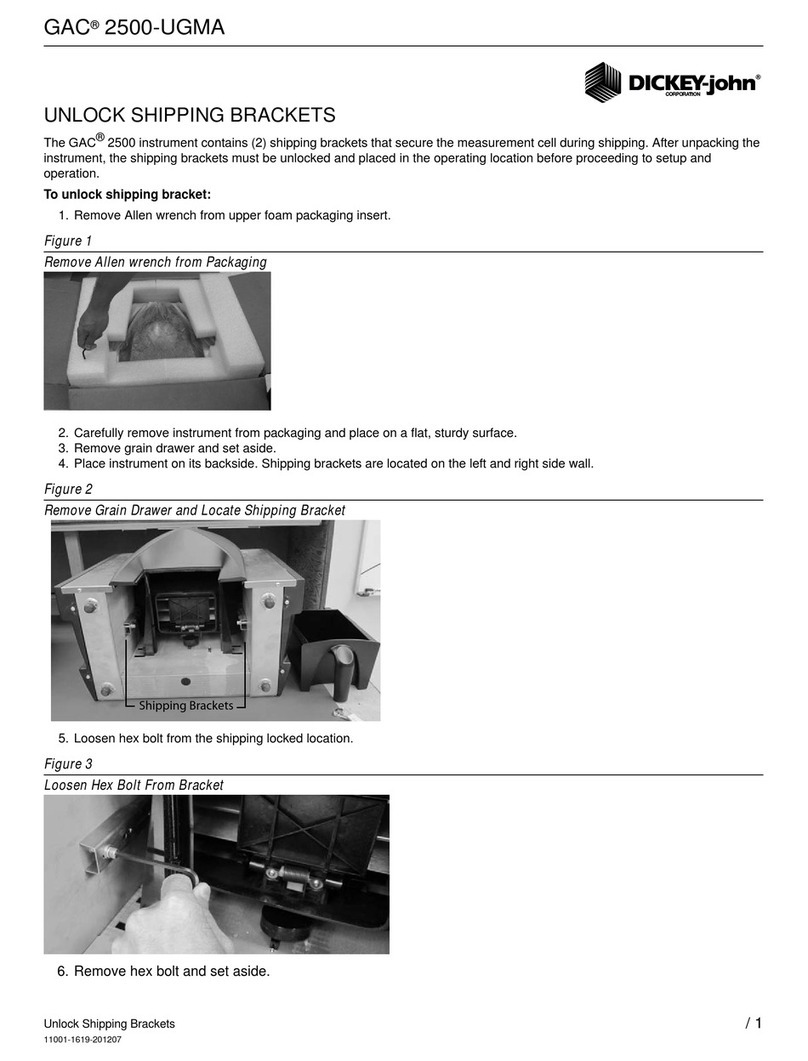
Dickey-John
Dickey-John GAC 2500-UGMA manual
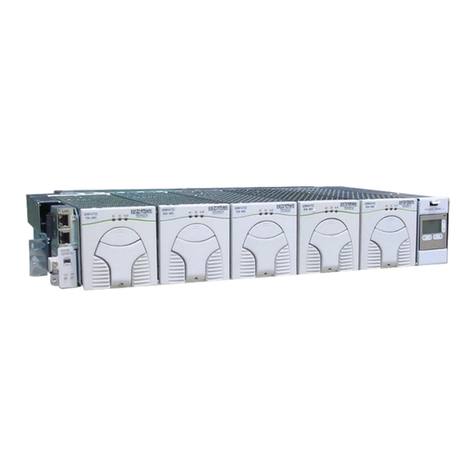
ABB
ABB CPS6000 product manual
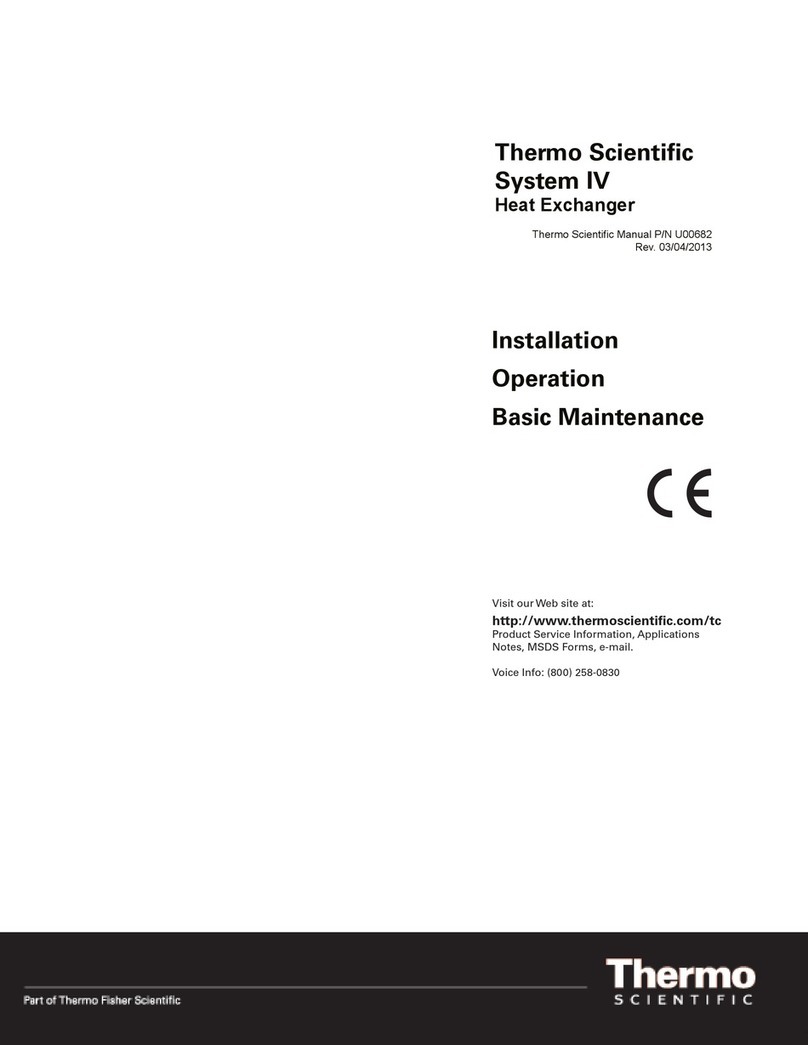
Thermo Scientific
Thermo Scientific System IV Installation, Operation, Basic Maintenance
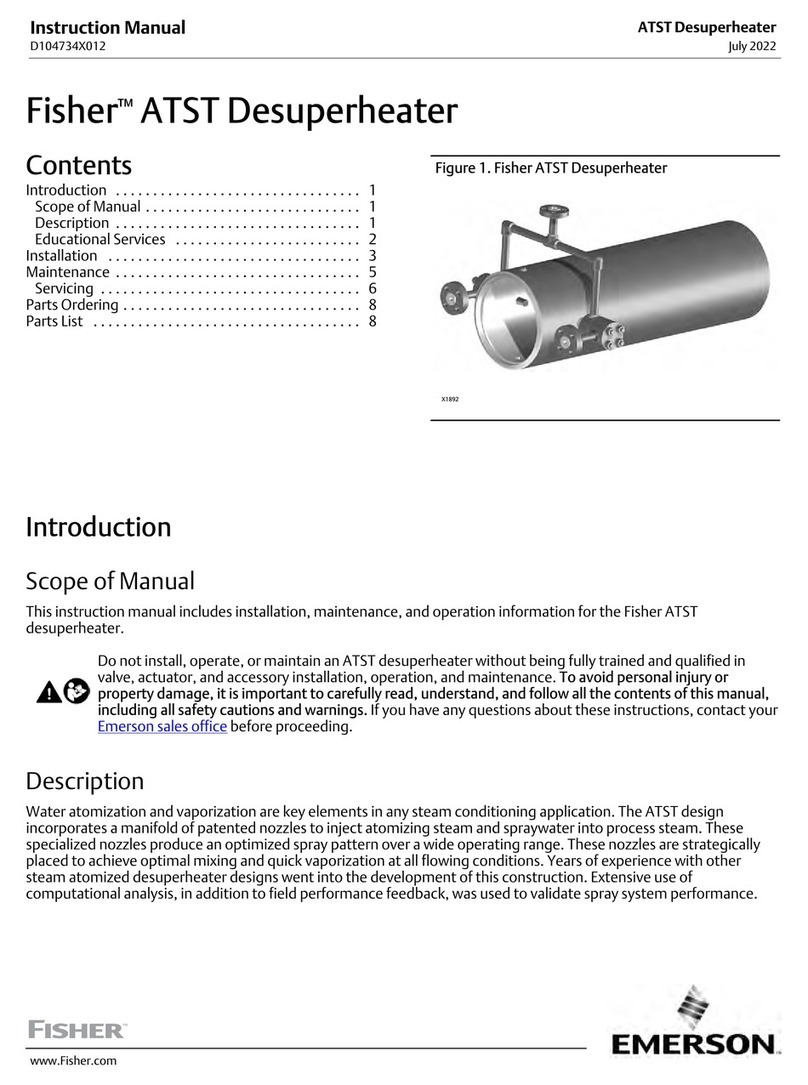
Emerson
Emerson Fisher ATST Desuperheater instruction manual
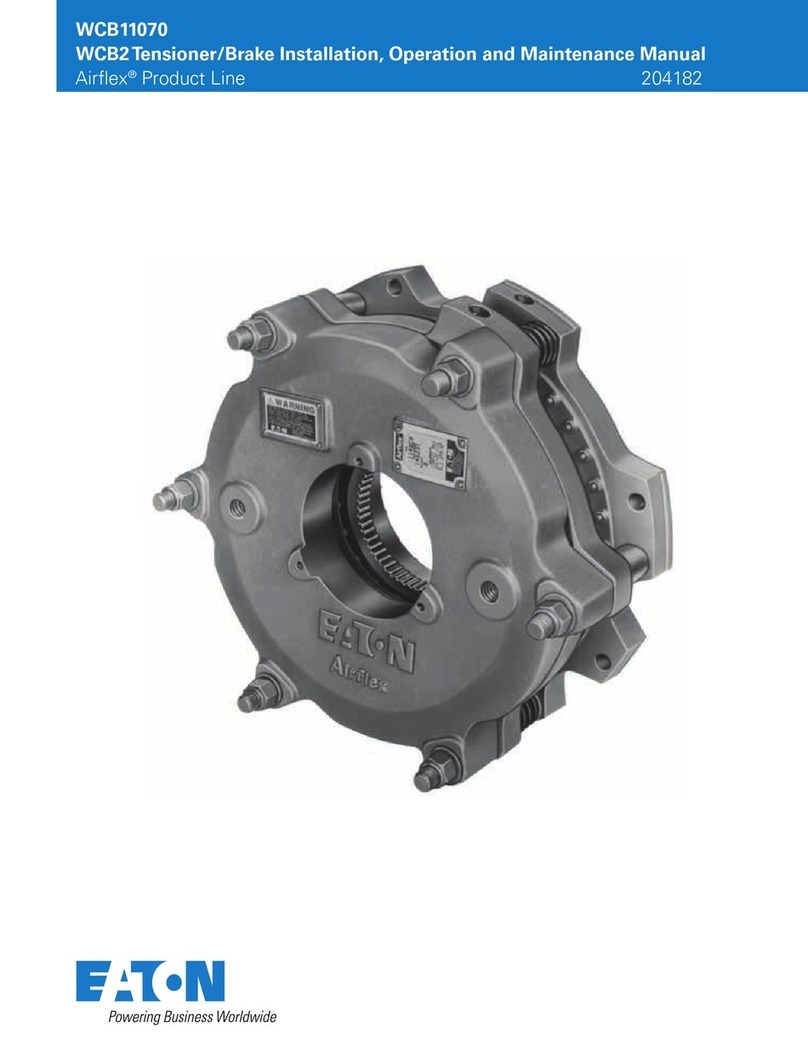
Eaton
Eaton Airflex WCB2 Series Installation, operation and maintenance manual

Parker
Parker Pneudri Maxi user guide

